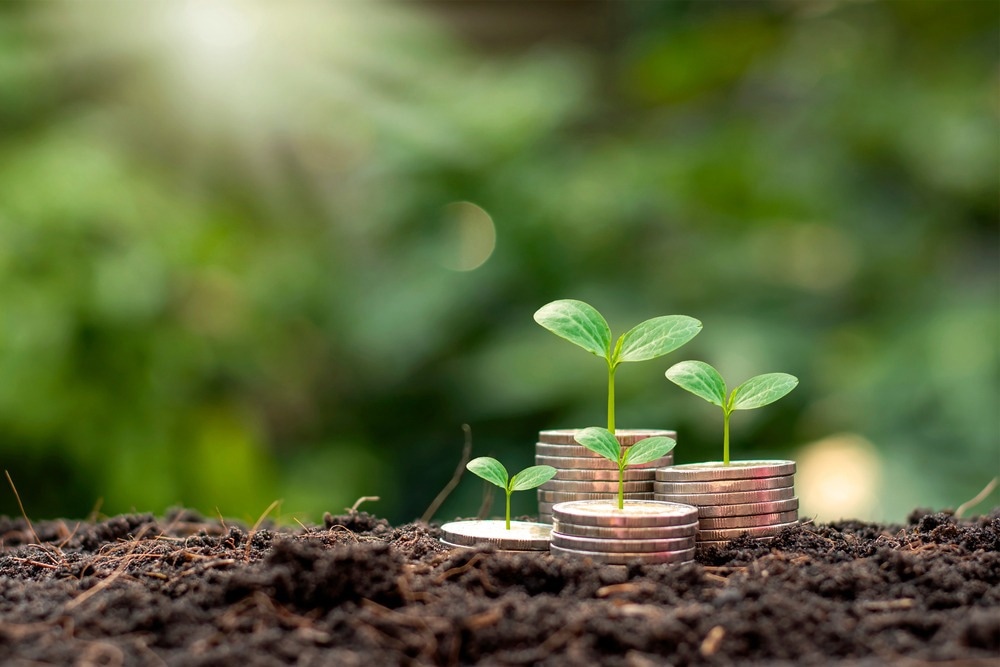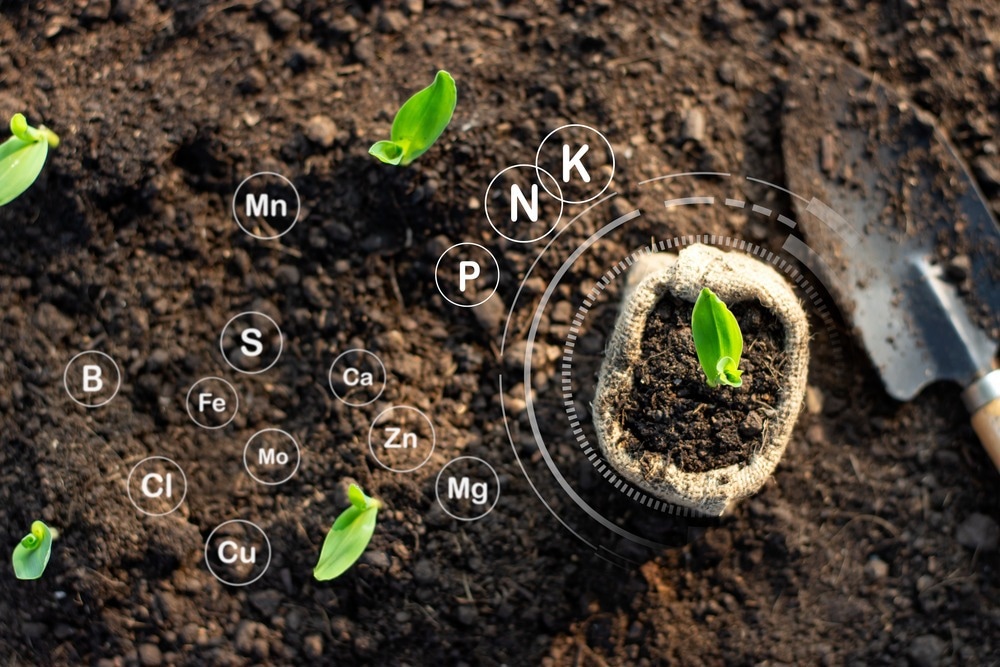Nanotechnology has been utilized to promote sustainable agriculture. Therefore, it is imperative to analyze the economic benefits of innovative nanoformulations that include nanofertilizers.

Image Credit: MEE KO DONG/Shutterstock.com
Keeping this in mind, scientists have evaluated the potential profit/loss linked to nanofertilizers. The effect of nanofertilizers on the net revenue, change in greenhouse gas emissions, increased net revenue from agricultural crops, and beneficial environmental impacts are some of the topics discussed.
Meeting Increased Demand for Agricultural Products
The continual expansion of the global population has significantly increased the demand for all types of agricultural crops. Although the conventional farming system, via the application of chemical fertilizers and pesticides, increases crop yield, these chemicals have detrimental effects on the environment. Farmers have inclined to overuse these fertilizers, much more than the amount required by the plants. A high dose of conventional fertilizer does not further increase crop yield; instead, it gets wasted in the agricultural field.
Nanotechnology has been applied in agriculture to increase crop yield. Applying different nanoformulations, such as nanofertilizers and nanopesticides, has demonstrated encouraging results. Nanofertilizers add nutrient value to plants, which can alleviate certain nutrient deficiencies caused by low consumption of calcium, zinc, and iron.
Nanofertilizers positively influence varied stages of plant growth, including seed germination, plant growth, flowering, and fruiting. In addition, some nanofertilizers, such as zinc oxide nanoparticles and nanomolybdenum, can remediate soil contaminated with heavy metals (e.g., cadmium, arsenic, and copper).
Challenges Associated with Fertilizers
A complete or partial replacement of conventional fertilizers with nanofertilizers is possible for cultivating nutrient-demanding crops, such as rice, wheat, grape, pear, and apple. It is important to determine whether enhanced production of commercially important crops can counterbalance the increased cost of nanofertilizers.
The production of fertilizers is a prominent contributor to greenhouse gas (GHG) emissions. For instance, the production of nitrogen fertilizers accounts for around 2% of global energy consumption.
In addition, microbial nitrification and denitrification of the residual fertilizer in farmlands cause the release of about 60% of total anthropogenic nitrous oxide emissions.

Image Credit: kram-9/Shutterstock.com
Economic Benefits of Nanofertilizers
Not many studies have conducted a cost-benefit analysis of nanofertilizers application. This analysis is important because it provides insight into the difference in the cost of crop production using nanofertilizers and conventional fertilizers.
It is still unclear whether nanofertilizers can generate net positive revenue in terms of macronutrients, i.e., potassium (K), phosphorous (P), and nitrogen (N). There is a lack of an optimal application method for nanofertilizers, to achieve maximum economic and environmental benefits. At present, scientists are working on developing an optimized mode of nanofertilizer application to enhance economic and environmental benefits.
To better understand the differential impact of conventional fertilizers and nanofertilizers, macronutrient K was used. This assessment revealed that both types of fertilizers enhanced corn yield; however, there was a difference in the yield. Conventional K fertilizer led to an increase in the corn yield by around 16.7%, whereas nanofertilizers K led to an increase in corn yield between 9.5% and 24.5%. This variation in yield depended on the dosage of nanoformulated K.
Although compared to conventional fertilizers, the unit price of nanofertilizers is higher, there is a high possibility that crop-specific optimal nanofertilizers will significantly increase the revenue. Based on many studies, an average increase in crop yield using nanofertilizers was estimated to be around 10 – 30%. Therefore, assuming a 20% increase in crop yield, it was estimated that nanofertilizers could add around $133.2 per hectare (ha) from corn, $66.0 from wheat, and $86.4 from soybeans, to the revenues.
Comparing the current cost of both nanofertilizers (macronutrients) and conventional fertilizers, it is still unclear whether it will be economically beneficial to replace traditional fertilizers with nanofertilizers. However, one must consider the fact that this substitution will have significant environmental benefits. For instance, compared to conventional fertilizers, the amount of nanofertilizers required to enhance plant growth and yield is very low.
Due to the low dosage of nanofertilizers, the subsequent accumulation of nanomaterial in the soil is low, which further decreases the risk of nanomaterial presence in agricultural produce.
Zinc is a micronutrient that is essential for plants’ growth. An Indian study revealed that spraying zinc oxide nanomaterials (nZnO) increased pearl millet yield by 37.7%. Although the cost of nZnO is more than conventional fertilizers, the net revenue increased from $38.6 per ha (using conventional ZnO) to $103.1 per ha (using nZnO). Similarly, another study revealed that nano-ferric oxide significantly enhanced tomato yield with enhanced net revenue.
A Cost–Benefit Model Determines Economic and Environmental Benefits
Recently, researchers analyzed the economic and environmental benefits of nanofertilizers and conventional fertilizers using a cost-benefit model. When environmental cost was excluded from the cost–benefit model, higher observed revenue was projected using conventional fertilizers. However, after including the environmental cost in the same model, the projected revenue decreased drastically. This finding indicates that conventional fertilizer is associated with a large environmental cost under a high dosage scenario.
The same model indicated that nanofertilizers do not generate positive net revenue considering the assumptions of the model. However, when important factors associated with nanofertilizers, such as lower unit prices, higher N use efficiency, and reduced N leaching, were considered, a positive net revenue was projected. Notably, the current model revealed that a combinational use of conventional fertilizer and nanofertilizers generated maximum revenue, based on maximizing crop yield. At present, scientists are exploring this effect further.
References and Future Reading
Su, Y., Zhou, X., Meng, H. et al. (2022) Cost–benefit analysis of nanofertilizers and nanopesticides emphasizes the need to improve the efficiency of nanoformulations for widescale adoption. Nature Food, 3, pp.1020–1030. https://doi.org/10.1038/s43016-022-00647-z
Safsten, F. (2022) Nanotechnology Could Improve Fertilizer, Study From Utah Water Research Laboratory Finds. [Online] Available at: https://www.usu.edu/today/story/nanotechnology-could-improve-fertilizer-study-from-utah-water-research-laboratory-finds
Basavegowda, N. and Baek, K.H. (2021) Current and future perspectives on the use of nanofertilizers for sustainable agriculture: the case of phosphorus nanofertilizer. 3 Biotech. 11(7), 357. doi: 10.1007/s13205-021-02907-4.
Kumar, Y. et al. (2020) Nanofertilizers for Increasing Nutrient Use Efficiency,Yield and Economic Returns in Important Winter Season Crops of Uttar Pradesh. Indian Journal of Fertilisers. 16 (8), pp.772-786.
Zulfiqar, F. et al. (2019) Nanofertilizer use for sustainable agriculture: Advantages and limitations. Plant Science. 289,110270. doi: 10.1016/j.plantsci.
Disclaimer: The views expressed here are those of the author expressed in their private capacity and do not necessarily represent the views of AZoM.com Limited T/A AZoNetwork the owner and operator of this website. This disclaimer forms part of the Terms and conditions of use of this website.